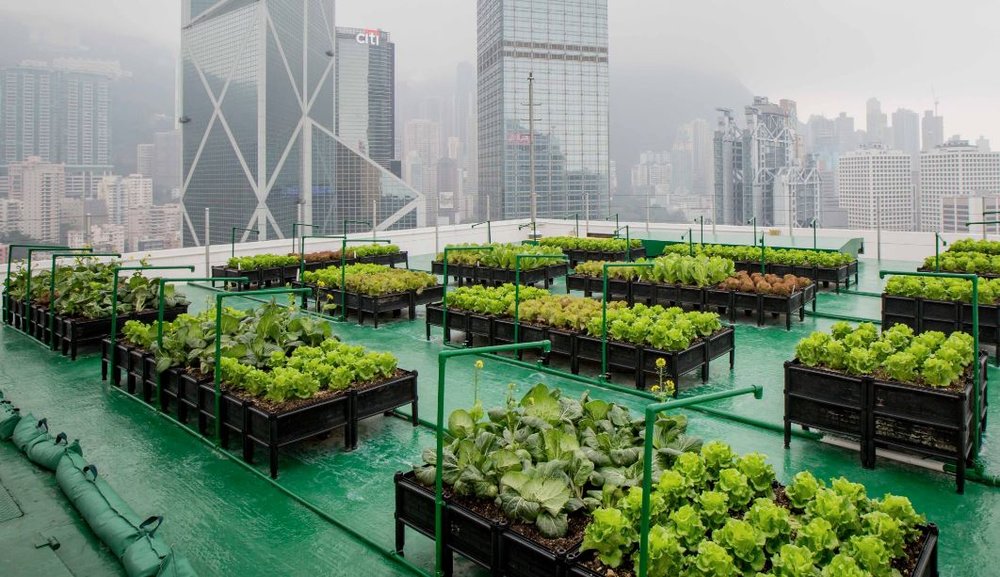Not known Factual Statements About City Blooming
City Blooming Things To Know Before You Buy
Table of ContentsSee This Report about City BloomingSome Known Facts About City Blooming.The 9-Minute Rule for City BloomingAn Unbiased View of City BloomingThe Single Strategy To Use For City Blooming
Fascinated in expanding food offer for sale in the City of Chicago? Believing concerning beginning a community garden? Adjustments to the Chicago Zoning Statute permit farming uses like community yards and urban ranches in lots of parts of the city. Below is a checklist of often asked concerns relating to the rules and laws that cultivators should consider when preparing an urban agriculture project.
The zoning amendment does not modify any various other codes managing composting, building permits, purchasing or renting City possessed building, business licenses or ecological contamination. There are existing codes that control these problems and they continue to be completely impact and might apply to your task. Area gardens are commonly owned or handled by public entities, public organizations or community-based organizations and maintained by volunteers.
Urban ranches grow food that is intended to be offered, either on a not-for-profit or for-profit basis. Due to their industrial function, city farms need a business permit. Yes. A community yard is enabled to sell excess generate that was grown on site if the sales are accessory or subordinate to the garden's key purpose described above.
City Blooming Fundamentals Explained
Composting is allowed however only for plant material that is produced and used on site. The amount of compost product can not go beyond 25 cubic lawns at any given time according to the standards in 7-28-715 of the City's Municipal Code. Yes. Since the soil at the majority of new garden sites needs modifying, garden compost, soil, wood chips, or various other materials can be acquired to create or improve the expanding space - home and garden.

If a building authorization is required then the hoophouse will certainly be thought about an accessory structure. You can discover even more regarding the structure authorization needs by contacting the Division of Structures. The 25,000-square-foot size limit is planned to prevent a single neighborhood yard from dominating an offered block or interfering with the block's existing property or industrial personality.
The limitation does not use to yards situated in Public Open Space (POS) districts. Can there be even more than one area yard that is 25,000 square feet on a solitary block? Yes. The dimension restriction puts on individual gardens, not to private blocks. No. Secure fencing is not needed, however, yards that have large parking lot might be required to install secure fencing or other landscaping attributes.
5 Easy Facts About City Blooming Shown
B1 & B2 districts call for that all business use tasks be carried out indoors. Is fencing required for city ranches? Fencings might be needed, along with landscaping and testing, for certain vehicle parking areas and outdoor job or storage space areas depending on area and the certain activity taking area.
Urban ranches call for structure licenses and zoning approvals prior to building (indoor plants). Various other forms of city testimonial might be required depending on specific frameworks, activities, dimension, landscaping, licensing, public heath and stormwater monitoring problems.
The Division of Service Matters and Consumer Security can assist determine the certain kind of company certificate that's needed. Off road car parking is required for a lot of business projects in Chicago. The needed number of parking spaces is based on the number of workers functioning on site and not the square video footage of the growing area.
Some Known Questions About City Blooming.

An urban ranch can offer garden compost product created on website, however, the operation needs to abide with the policies in 7-28-715 of the Chicago Municipal Code. Aquaponic systems are permitted indoors on city farms in several zoning areas.
Approximately five hives or swarms of honey bees may be kept as an accessory usage. Beekeepers need to register with the Illinois Division of Farming. For more information about the recommended zoning change you may speak to the Department of Real Estate and Economic Advancement, Bureau of Planning and Zoning at 312.744.8563.
Farming in cities and urban areas An urban ranch in Chicago. Urban agriculture refers to various practices of growing. https://filesharingtalk.com/members/597974-cityblooming, processing, and distributing food in city areas. The term additionally relates to the area tasks of pet husbandry, tank farming, beekeeping, and horticulture in a city context. Urban farming is differentiated from peri-urban agriculture, which happens in backwoods look at more info beside suburbs.
Some Ideas on City Blooming You Should Know
, who seek to create social networks founded on a common principles of nature and community holism. These networks can establish by means of formal institutional support, becoming integrated right into local town planning as a "transition town" motion for lasting city advancement.
Some of the initial proof of city farming comes from Mesopotamia.